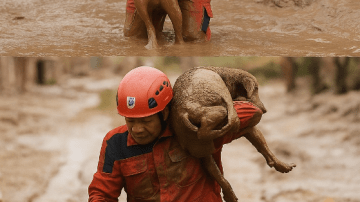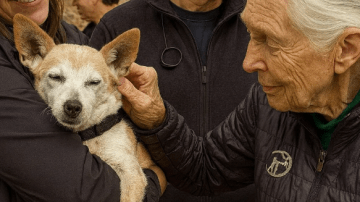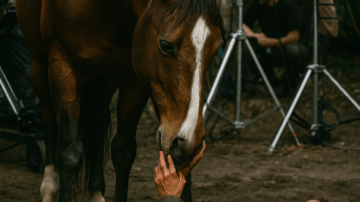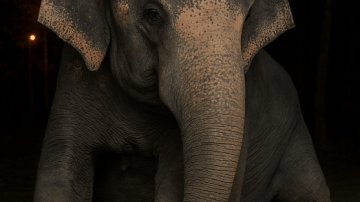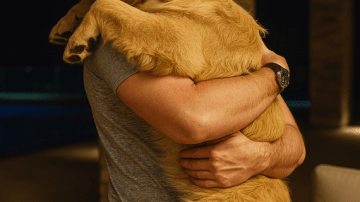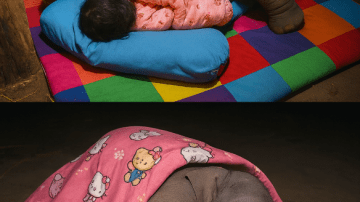Anastasia was found by the roadside.
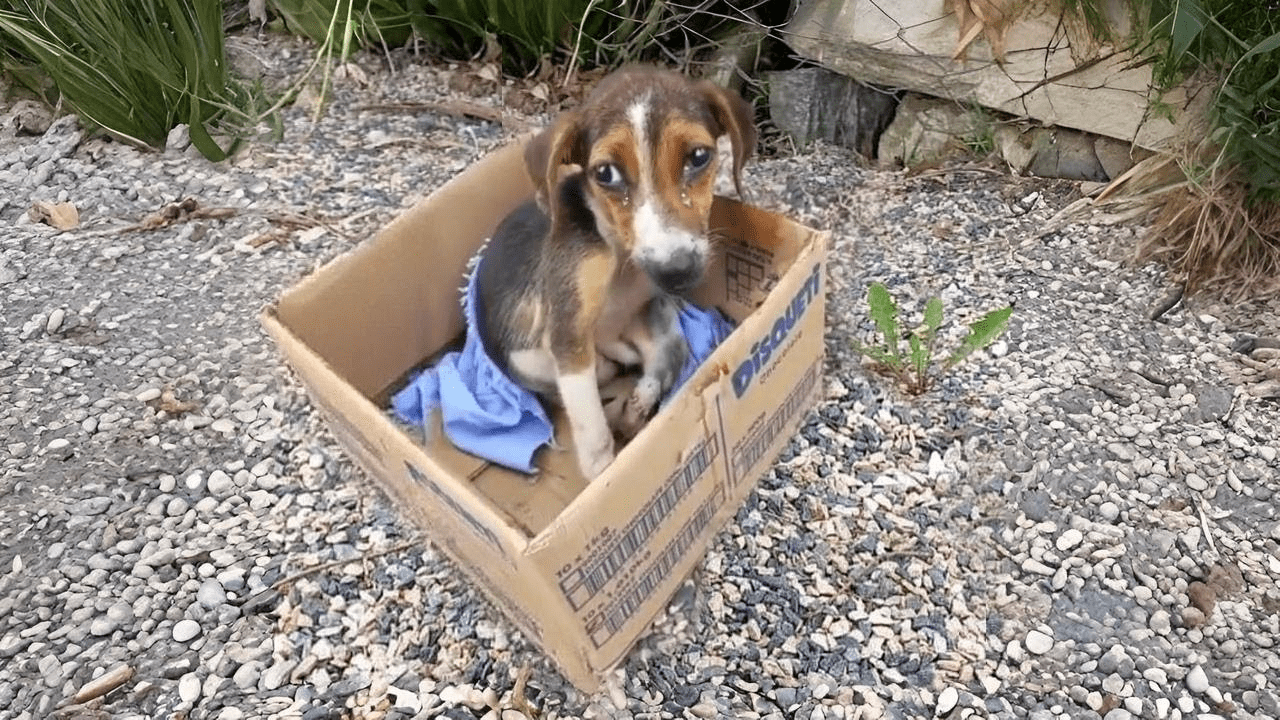
She was collapsed, sobbing silently inside a battered cardboard box. The kind of box meant to carry groceries or broken tools—never a living being. And yet, there she was: discarded like garbage, curled in a corner, struggling to breathe.
When she lifted her head, we froze in shock.
Her face was drenched in blood. Her mouth so swollen she could not open it. Her tiny jaw crooked from a brutal kick. One eye clouded, her nose bleeding so heavily it looked as though it might burst. Someone had not just tried to hurt her—they had tried to break her. And when they were done, they left her in that box on the side of the road, to die unseen and unmourned.
But she was seen. And she was not unmourned.
We rushed her to the clinic. The air filled with the sterile scent of antiseptic and the quiet urgency of the team preparing for the worst. Anastasia’s tongue was swollen and raw, every breath labored, each one more painful than the last. She was placed immediately on oxygen—her small body trembling as the mask hissed.
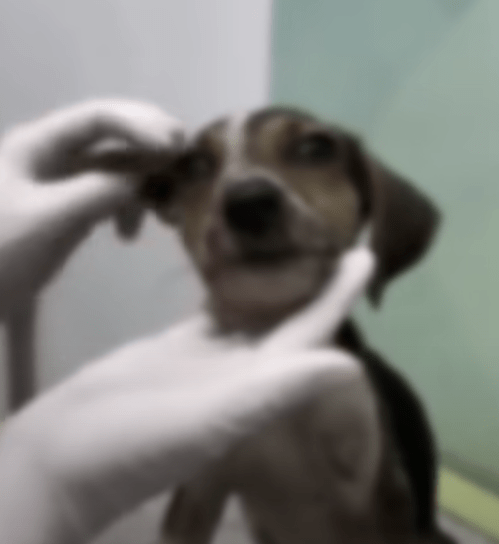
The swelling in her jaw made even inhaling feel impossible. We had to stabilize her before we could even begin tests.
The team prepared everything: skull and chest X-rays, ultrasound, blood panels. We prayed silently for strength as the machines hummed to life.
The results broke our hearts.
Her jaw wasn’t fractured, but the truth was worse: her stomach was filled with stones. Dozens of them. Anastasia had eaten rocks—not because she wanted to, but because she was starving. Hunger so desperate, so relentless, had driven her to consume anything she could find, even the cold hardness of gravel, just to fill the aching void inside her belly.
The stones were dangerous. They could cause a deadly blockage, or even puncture her intestines. Surgery was impossible—her body was too weak to endure it. We had to try another way. Carefully, gently, we induced vomiting to bring up what stones her stomach could release.
Then we repeated the ultrasound.
Most of the smaller stones had begun to pass naturally through her system. But there were still larger ones lodged inside, threatening her fragile life. For those, we had no choice but to use an endoscope.
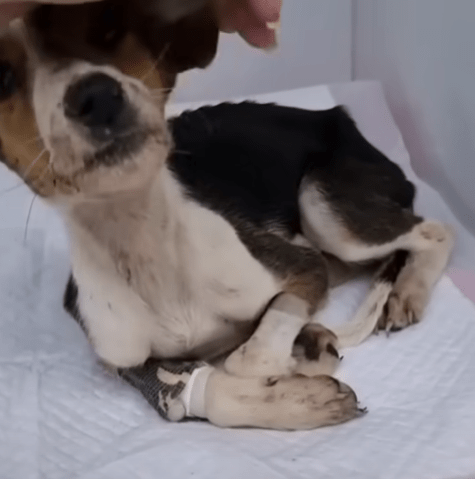
It was risky. But Anastasia fought bravely, and the procedure was a success. One by one, the foreign objects that had weighed her down were removed. For the first time in weeks—perhaps months—her stomach was free.
After the procedure, Anastasia began eating recovery food. Tentatively at first, then with a determination that amazed us. But her fight wasn’t over. Her blood tests revealed more battles inside her body: anemia, dangerously low albumin levels that slowed her healing, and lingering infections still waging war within her frail frame.
Still, she fought.
Days passed. She began to put on weight. Just one kilogram—but it was a victory, proof that her body was responding to care and nourishment. Every small gain felt like a mountain climbed. Her breathing eased. Her eyes brightened. The bleeding stopped. Her fragile life was knitting itself back together.
After twenty long days, Anastasia was stable enough to leave the clinic.
I carried her home, cradled against my chest. My home would be her haven. There she could rest on soft blankets, eat meals served with love, and breathe air free from fear. I thought she would stay with me for months as she recovered. But fate had other plans.
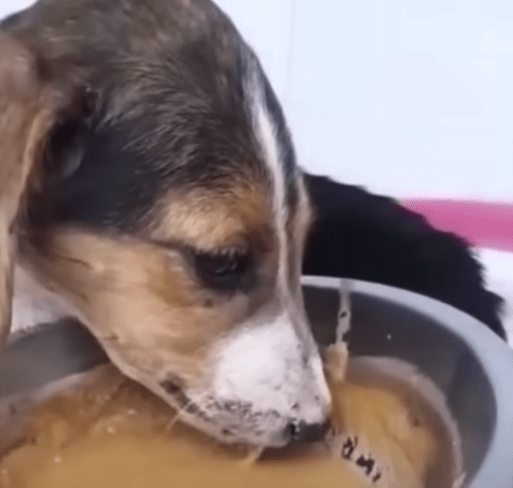
Not long after, a woman reached out—gentle, kind, her voice brimming with hope. She wanted to adopt Anastasia. My heart clenched at the thought of letting her go, but I knew: what Anastasia needed most was not just my care, but a forever family.
And so she went home.
In her new house, something beautiful happened. Anastasia met another dog—her new sister. From the very first day, they became inseparable. They ran together, tails wagging like banners of joy. They played until exhaustion dropped them side by side, tongues lolling, eyes sparkling with mischief.
The contrast was staggering. Only weeks before, Anastasia had lain bleeding in a cardboard box, barely clinging to life. Now, she was running free in the sun, chasing happiness across the grass.
Her new life overflowed with the things she had been denied: a bed of her own, bowls of nourishing food, gentle hands that stroked her fur, voices that spoke only kindness. She had people who adored her and a canine friend who reminded her every day that she was safe, she was loved, and she was home.
Anastasia’s torment was finally behind her.
Her story is not just about survival. It is about transformation. She was broken by cruelty, but love pieced her back together. She was silenced by fear, but joy gave her voice again.
Every life matters. Every cry deserves an answer.
Anastasia’s cries were heard. Her pain was answered. And love—love made her whole again.

